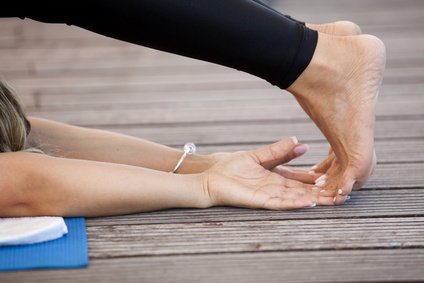From downward dogs to skin-tight Lululemon tights, yoga has definitely found its place in the 21st century. What originated in ancient India more than 5000 years ago is now this decade’s biggest fitness trend, with ‘yogis’ claiming that hitting your mat goes hand in hand with a host of health benefits. But is it the real deal? Before we can answer that question, let’s take a look at what defines fitness.
Defining fitness
 Now this is a bit of a grey area, because fitness means different things to different people. But generally, fitness tends to focus on cardiorespiratory performance. This included the heart, lungs and blood vessels, and analyses how well they perform under pressure.
Now this is a bit of a grey area, because fitness means different things to different people. But generally, fitness tends to focus on cardiorespiratory performance. This included the heart, lungs and blood vessels, and analyses how well they perform under pressure.
There’s also muscular fitness to consider, which refers to both strength and endurance. The two don’t necessarily correlate, as often people who can run for hours on end can’t necessarily lift heavy weights without feeling pain or discomfort.
Different types of yoga
If you’re at all familiar with the practice, you’ll probably know that not all yoga is created equal. For example, Vinyasa Flow is a dynamic style of practice that links movement and breath and is generally quite fast paced. In comparison, Hatha is a gentler form of yoga that’s great for beginners and delicate bodies. Ashtanga is designed to build internal heat in the body, while Bikram gets you hot and sweaty. Loved by celebs, Kundalini is both physically and mentally challenging, while Yin is all about balancing the body and the mind. If you really want to reap the best benefits for your body it’s important to familiarise yourself with the different types of yoga practice, and learn what works for you.
Calorie wise, here’s a quick overview of what burns what over a 90 minute class:
- Vinyasa Flow – 891 calories
- Hatha – 284 calories
- Bikram – 716 calories
- Ashtanga – 492 calories
Putting yoga to the test
 While yoga isn’t traditionally a cardio intensive activity, a recent study conducted in the USA proved that it can definitely boost fitness. Testing muscular strength and endurance, flexibility, cardiorespiratory fitness, body composition, and lung function, researchers analysed the performance of 10 college students before and after eight weeks of yoga training. Every week, the students attended four yoga sessions including 10 minutes of pranayama, 15 minutes of warm-up exercises, 50 minutes of asanas and 10 minutes of meditation. The results were impressive, with muscular strength increasing by up to 31%, muscular endurance by 57%, flexibility by a huge 188%, and VO2max by 7%
While yoga isn’t traditionally a cardio intensive activity, a recent study conducted in the USA proved that it can definitely boost fitness. Testing muscular strength and endurance, flexibility, cardiorespiratory fitness, body composition, and lung function, researchers analysed the performance of 10 college students before and after eight weeks of yoga training. Every week, the students attended four yoga sessions including 10 minutes of pranayama, 15 minutes of warm-up exercises, 50 minutes of asanas and 10 minutes of meditation. The results were impressive, with muscular strength increasing by up to 31%, muscular endurance by 57%, flexibility by a huge 188%, and VO2max by 7%
So in regard to the question of whether yoga can boost your fitness, the answer is a bona fide yes. Of course, it does depend on what style of yoga you choose, how often you practice and what your daily diet consists of. If you can get all these factors in tune, yoga can definitely serve as a great way to stay fit and flexible. Most studios and teachers are usually more than happy to chat about your needs, and help you find a class that works for your body.









Join the Discussion
Type out your comment here:
You must be logged in to post a comment.